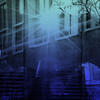A resilient future
The close proximity of Temple to her home enabled Fernandez to commute, and its flexibility for nontraditional students allowed her to continue working to support her family. Fernandez toyed with the idea of studying political science or architecture, but during an urban planning course in her first semester she came to realize the power inherent in shaping a landscape.
It quickly became apparent she had found her calling.
“It’s a culmination of my life experiences,” Fernandez said. “Trying to work toward a more just future that is resilient for all people.”
As she moved through the program, four of her designs won American Society of Landscape Architects awards. Most renowned was her exhibition Above Below Beyond, in which Fernandez and fellow designer Amy Syverson, TYL ’12, reimagined Philadelphia’s abandoned Reading Railroad as an elevated public space. The project served as the inspiration for a real-world revitalization of the line as The Rail Park, with a quarter-mile Phase 1 component north of Chinatown already open to the public.
Changing the world was never a question
At Sasaki, Fernandez has been named a Landscape Architecture Foundation Fellow, through which she’ll continue to rethink how design processes can better incorporate social, cultural and linguistic knowledge.
But Fernandez is also a leader among a new, more diverse generation of planners, who are thinking about more than just visual aesthetics.
“I just love the ability to shape society at all these different stages,” Fernandez said. “The connection between land and power is really important. Land and landscape in the public realm is really the most poignant expression of power in our society. And if we can start to shape it differently, I think we can embrace and create new perspectives for how we can move through the world differently than we are today.”
—By Kyle Bagenstose, KLN ’11, and Cal Setar



